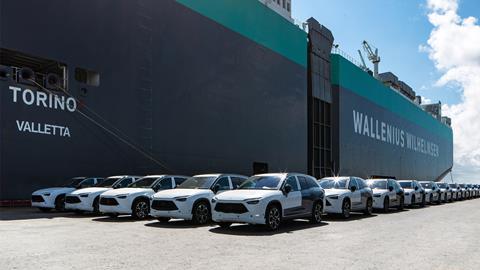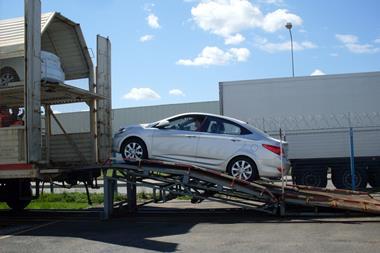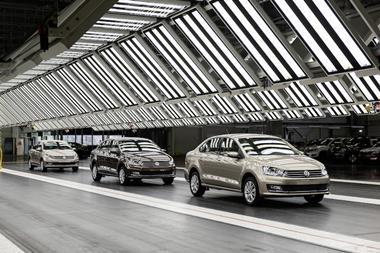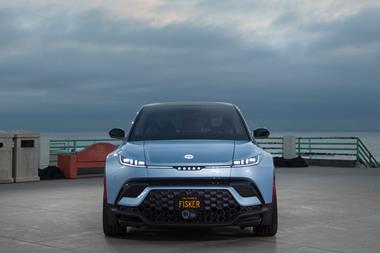Delegates at last week’s Spring Congress of the Association of European Vehicle Logistics (ECG) heard that China’s vehicle exports surged in the first quarter of 2023, as global demand for electric vehicles helped spur a strong start to the year.
Following several years of rocky performance, exports from China posted year-on-year growth of 71% in the first quarter, boosted by strong demand for Chinese-made vehicles across international markets. According to Namrita Chow at the ECG’s Business Intelligence unit, a total of 994,000 units were exported in Q1 this year, almost equivalent to the full year in 2020 (995,000 units). That figure indicates how far the sector has recovered since the Covid shutdown in China. Latest figures for March 2023, show a record 364,000 units exported in one month.

Russia and Mexico boost growth
While Chinese exports have seen positive momentum across the board, growth in Russia and Mexico has been particularly strong. The latest data shows that Russians have increasingly turned to Chinese brands following the departure of most western brands from the market last year, resulting in a significant shift in the Russian light vehicle market.
While overall new car sales decreased by 44.7% to 153,477 units, Chinese brands have seen remarkable growth.
“Sales of Chinese brands are really booming in Russia and they gained share from the established brands we all know, Chow told delegates. “Western brands continue to hold court but Chinese brands are gaining very quickly there.”
Chow noted that Chinese brands Chery, Haval and Geely have all demonstrated outstanding growth, with their sales increasing by 204%, 100% and 129% respectively in the first quarter, compared to the first quarter of 2022. These three brands sold a total of over 48,000 units, nearly a third of the total new car sales in Russia in Q1, 2023.
Other Chinese brands like Exeed and Changan also performed exceptionally well, with Exeed posting a 142% increase in sales and Changan seeing a 138% rise. Even newer entrants, such as Great Wall and FAW, showed promising signs, with the former witnessing a 688% sales growth, albeit from a smaller base.
In stark contrast, western brands, which have been forced to withdraw from the Russian market because of the Ukraine war, have seen a significant plunge in their sales. Audi, BMW, Ford, Hyundai, Mazda, Mercedes, Peugeot-Citroën, Volkswagen, Toyota, and Suzuki all saw their sales drop by over 80%. Hyundai and Toyota, which had strong market presences, suffered a drastic 98% and 99% decrease, respectively
China also became the largest supplier of cars to Mexico in the first quarter, as part of a trend that sees a growing number of international OEMs using China as a base for shipping to home countries and developed markets.
Imports through Belgium
Despite strong growth in these markets, Belgium remains the number one destination for Chinese light vehicle exports, with the port of Zeebrugge, now part of the newly merged port of Anterp Bruges, the main entry point for Europe and the biggest vehicle-handling port in the region.
“The top destination for Chinese exports internationally is Belgium, followed by the UK and the Saudi Arabia,” Chow said, highlighting that new players continue to disrupt vehicle sales in Europe, with an increase in Chinese brands entering the highly competitive European market on price.
Total Chinese exports to Belgium were $5.5 billion in 2022, followed by the UK with around $4.4 billion. Several new brands are also set to launch or expand in 2023. These include Vietnam’s Vinfast, Chinese electric passenger car marque Arcfox, Zeekr – a subsidiary of Geely Automobile, and Shanghai-based manufacturer HiPhi. However, the sector remains volatile, with some announced launches disappearing before they even reach the implementation phase.
“International OEMs are also increasingly using China as base for shipping to home countries and developed markets,” Chow added. “Electric cars from Chinese brands entering western European markets more than doubled in the first quarter, against the same period last year in a market that saw total new battery electric vehicle (BEV) registrations grow by 32% year-on-year.”
ICE vs EV
In Q1 2023, vehicles driven with an internal combustion engine (ICE) accounted for 75% of Chinese exports, while new electric vehicles, including BEVs, plug-in hybrids, and fuel cell vehicles, accounted for 24.1%. EV exports have experienced considerable growth, with a total of 248,000 exported year-to-date. The breakdown includes 237,000 passenger EVs and 11,000 electric commercial vehicles.
This growth trend is also evident when comparing exports by type for the full year of 2022: ICE vehicles accounted for 81.3% and NEVs for 18.7%. The value of Chinese passenger vehicle exports has also been rising, with a 145.5% year-over-year increase from 2020 to 2021, totalling $24.43 billion, and an 84.4% year-over-year increase from 2021 to 2022, reaching $45 billion.
China’s vehicle export growth, particularly in EVs, highlights the country’s increasing presence in the global automotive market. As the world continues to shift towards greener mobility solutions, Chinese EV manufacturers are well-positioned to benefit from this trend and further strengthen their market share.
Benefits of the backlog
Globally, however, light vehicle (LV) demand continues to face a structural gap as multiple disruptors thwart the path of recovery, Justin Cox, director at Global Data told delegates.
“Backlogs and Chinese LV market pricing support will help offset any economic downturn impact in 2023 but a structural gap between demand and supply is expected to endure this year as global, supply-side constraints and model-mix affordability continue to leave underlying LV demand unsatisfied,” Cox said.
These factors are set to weigh on major OEMs’ medium-term LV production, with Cox forecasting that VW, Renault-Nissan-Mitsubishi, Honda, Ford, GM and JLR will all remain below their 2019 baseline production levels as far out as the end of the forecast period in 2026. European LV production as a whole is not expected to reach pre-pandemic levels within the forecast horizon either.
Cox said that better supply management, falling competition for chip capacity and some supply transfers from Russia have supported a better supply outlook for the automotive industry. However, he also noted that raw material and energy price volatility is expected to weigh on the outlook for some time.
“Our forecast has shifted from a ‘V’ shape to ‘U’ shaped recovery. Measured against our January 22 forecast, the global full-year 2022 outturn was cut by 3.5m and the 2023 view has been cut by 7.6m,” Cox said, adding that longer term, the downgraded demand environment will be reflected in associated cuts, as OEMs are driven increasingly to cut margins and introduce incentives.
Strong performance by Chinese OEM brands is also set to add pressure on margins as numbers of cheaper Chinese BEVs entering the European market increase. However, this may hold opportunities for LSPs going forward and given Europe is expected to outsell China in BEVs by 2033.


























![Global[1]](https://d3n5uof8vony13.cloudfront.net/Pictures/web/a/d/s/global1_726550.svgz)













No comments yet